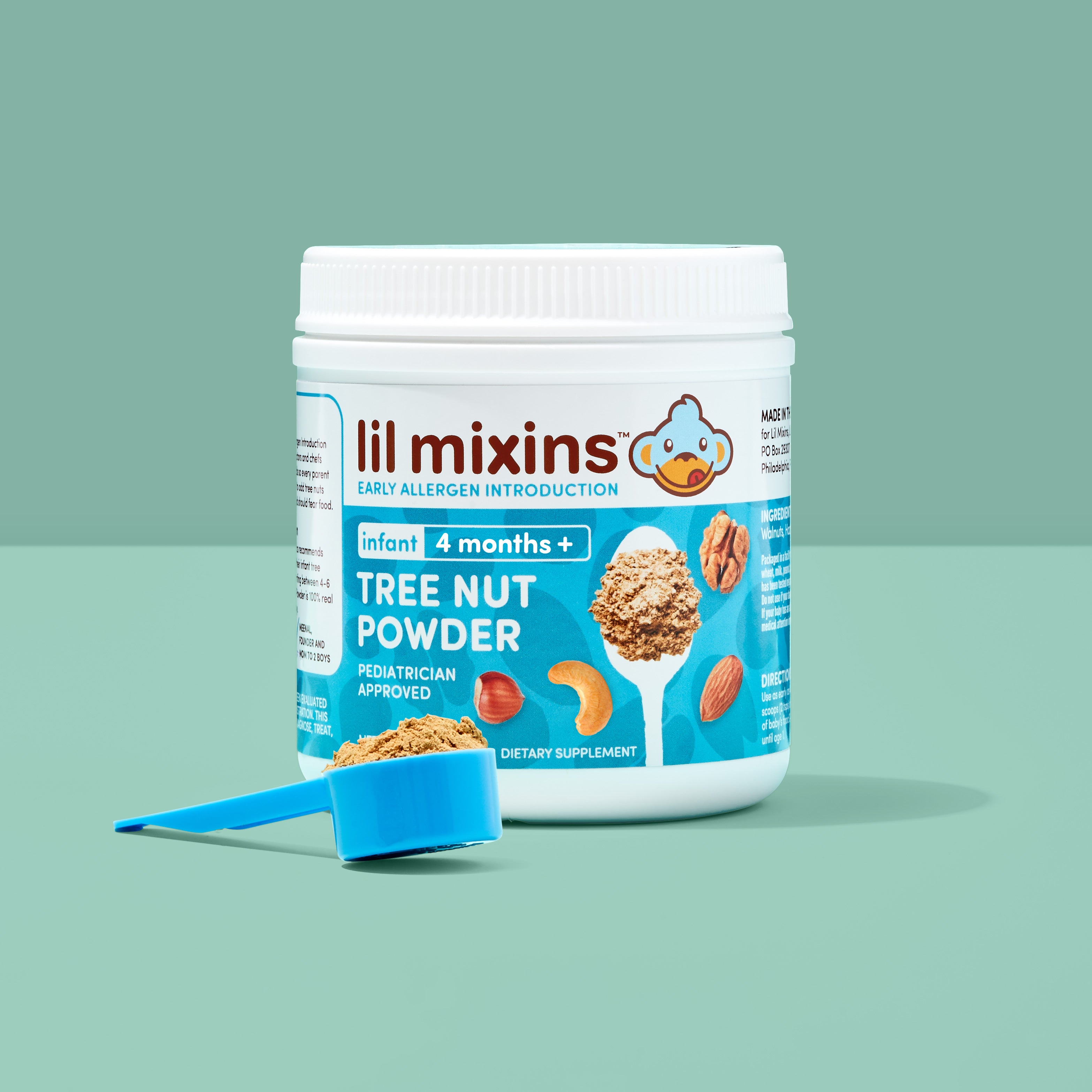What Are Tree Nuts?
There’s more to learn about protecting your baby from tree nut allergies. Read our Food Allergy Guide to discover how you can lower your child’s risk of developing a tree nut allergy.
Most people know that tree nuts include a large variety of nuts. But what makes a tree nut a tree nut? And how are they different from peanuts?
What Makes a Tree Nut a Tree Nut?
Tree nuts are technically the seeds of certain fruit-bearing trees. The tree nuts you’ve heard of like almonds, walnuts, hazelnuts, pistachios, brazil nuts, pecans, cashews, etc. all grow on trees. What makes them different from other tree-growing fruits like apricots and avocados is that the outermost shell is very hard, and the meat inside is hard or leathery.
With most fruits, you eat the outermost skin and the sweet meat that surrounds the seed. Think of a biting into a juicy peach — the skin and the meat are both soft. In the case of a tree nut, you cannot eat the outermost layer or the meat - it’s way too hard. Instead, you eat the seed itself. And unlike a peach pit which has an inedible skin surrounding the seed, in a nut, there is a thin, edible skin surrounding the seed.
Why is this important?
- Many tree nuts are seeds of trees in the same family. So a person with an allergy to almond, for example, is more likely to also be related to its cousin, the cashew.
- Tree nuts are very different from peanuts, which are actually legumes.

Shop Tree Nut Mixin 4-Month Supply
Tree Nut Families
Tree nuts from the same family often cause cross-reactivity between each other.
Here’s a list of some tree nut families and the specific nuts they include:

People who are allergic to walnut are more likely to be allergic to pecan because they come from the same tree nut family. And inversely, people who can tolerate walnut are more likely to tolerate pecan.
In 2005, a team of researchers looked into cross-reactivity to see if it was true. They used a protein testing method on actual blood to look for cross-reactivity among a list of tree nuts.
They inhibited one protein and looked to see what other nut proteins were also inhibited. Here’s what they found:

As you can see from the chart above, there are connections between walnuts and pecans, and hazelnuts, cashews, and brazil nuts.
This study also shows us that when introducing tree nuts to babies, we don’t necessarily have to feed them every single nut. Feeding infants almonds, walnuts, hazelnuts and cashews and allowing their bodies to develop tolerance to those nuts will likely create tolerance to all tree nuts.

Shop Daily Mix One-Month Supply
Peanuts and Tree Nuts are Different

Peanuts and tree nuts are totally different. In a nutshell, peanuts are beans, or legumes, and tree nuts are seeds of fruits.
What makes something a bean? It is found in a pod and it grows in the ground. Peanuts are more closely related to peas and lima beans than to tree nuts. Lastly, peanuts grow in hotter regions while nut trees need a lot of water and a more temperate climate.
As you see from the study above, when scientists looked at how the immune system treats peanuts in relation to tree nuts, there was no overlap. This is because the proteins in peanuts are very different from the proteins in tree nuts.
Alternatively, a person with a peanut allergy is more likely to have an allergy to soybeans, peas, and lentils. Due to the rise in peanut allergies in the United States, many food manufacturers started using pea protein in their recipes as a safe alternative. Unfortunately, we are seeing an increase in pea allergies as well.
Keep learning about tree nut allergy prevention with more information about when to feed your baby tree nuts.




